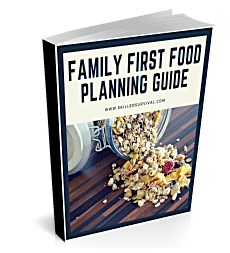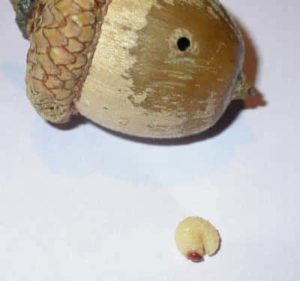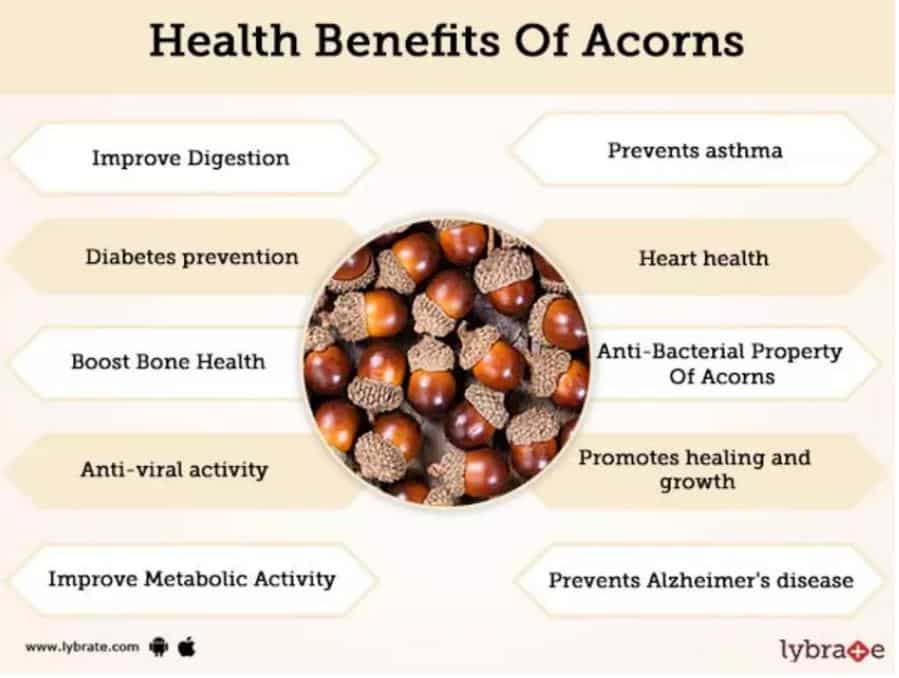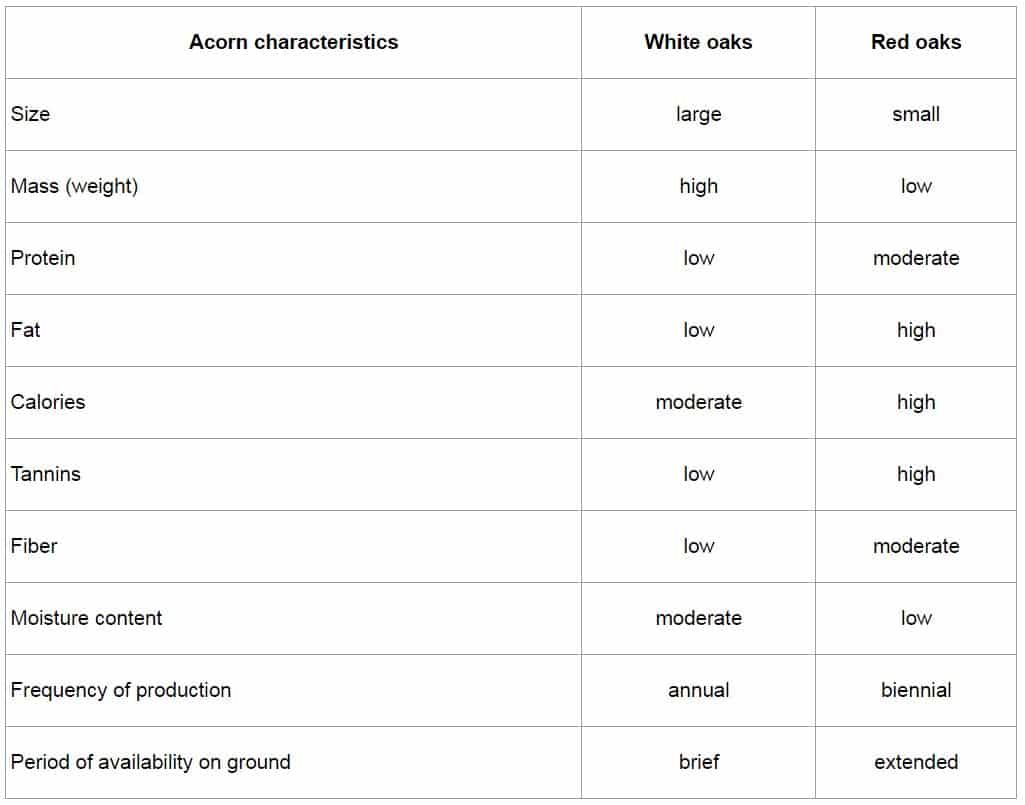Today, we’re tackling the age-old question: Are acorns edible?
Because every time someone brings up acorns as a survival food, another person swears they’re poisonous. And honestly, if you’ve ever taken a bite of a raw one, you’d be tempted to agree!
But here’s the truth—raw acorns are packed with bitter tannins that make them about as appetizing as chewing on a rubber tire.
However, if you know what you’re doing, you can turn these little nuggets into a legit, edible, and even tasty food source. So let’s crack this mystery wide open!
Acorns ARE An Abundant Carb
You need Carbs to survive! Yes, carbs…the “bad guy” in every diet. Why? Because carbohydrates are one of the easiest sources of energy for the human body.
Simple carbs like honey and sugar enter your bloodstream quickly. These provide a near-instant energy boost and mental agility.
More complex carbs from whole grains provide a longer-lasting source of energy.
Making grain-based carbs better for extended periods of activity. And a healthy body requires some carbs, but not as much as most of us consume daily. Because if you consume excess carbs, your body will turn those extra carbs into fat.
Carbs are hard to avoid in the grocery store. So most of us end up on diets high in carbs.
As we all know, storing lots of fat is unhealthy. So in modern society, carbs get a bad rap. But what most people don’t realize, carbs are difficult to find in nature.
That’s not to say there aren’t wild carbohydrates for a savvy forager. It’s one of the most common wild edibles is one you’ve passed on countless walks.
Acorns!
- But are they edible?
- Can you eat them raw?
- Are they poisonous?
↓ Acorns: A Forgotten Superfood
Are Acorns Really Edible?
Yes, they’re, but eating acorns is a hotly debated topic.
↓ How To Eat Acorns, But Maybe Don’t
Raw acorns taste TERRIBLE!
They’re incredibly bitter due to the high levels of tannins. And they leave your mouth feeling dried out and chalky. Some studies show consuming a large number of raw acorns often leads to health issues:
Side-Effects & Allergies of Raw Acorns
Acorn poisoning, or oak toxicity, occurs when too many raw acorns or buds are ingested. This creates gastrointestinal and kidney problems. Excessive consumption of these raw nuts cause nausea due to the tannin content.
Despite all that, there are some legitimate health benefits for acorns (see the Health Benefits diagram below).
Like many nuts and seeds, they’re a small packet of fats, carbs, and protein.
So in a worst-case survival emergency, eating acorns as a “last resort” is better than starving. But what if there was a way to get around the less pleasant aspects?
If there were a way, they’d become a viable long-term human food source.
A natural way to provide some healthy critical, complex carbs! Well, guess what? There is a way! So if you want to consume acorns without the side effects, learn how to process them properly.
It comes down to knowing how to pick the right acorns and how to process them.
↓ How To Make Acorns Edible
You can make three different consumable end products:
- 1) Acorn Flour
- 2) Acorn Meal
- 3) Acorn Oil
So let’s get started.
↓ Eating Acorns: How To Forage, Store, & Cook Acorns

Want a free family-first food planning guide?
Enter your email below to instantly download this Complete Guide PDF. No purchase necessary. 👇 👇Different Types Of Oak Trees & Acorns
Acorns grow on oak trees, and there are hundreds of unique species of oak trees. So there is a wide variety of acorns available.
So not all acorns are the same. Each specific acorns have a different ratio of fat/carbs/protein. This ratio determines the best way to process them into flour.
So it’s worth learning which oaks grow in your area. And how to tell them apart.
The best time of year to identify an acorn species is in the spring.
That’s when you can take note of the small green acorns forming in the trees. Now you can compare these “young” acorns and the new leaves and bark. You can then use a good tree guide to see which oak species match your area.
Even if you can’t figure out the exact species, knowing a red oak from a white oak is helpful. You can also use the chart below:
This allows you to determine how best to proceed. Some of the best acorns for harvest are considered “sweet,” meaning low in tannins. These include Valley, Blue, White, Pin, Burr, and Emory Oaks.
These types are great for producing both acorn flour and acorn meal. Many of these species also produce large acorns, which means fewer to peel!
Red, black, and live oaks produce acorns that are extremely high in fat content. So they’re better suited for pressing into acorn oil.
Yes, making an acorn meal from them is still possible. But the high-fat content limits their storage life.
How To Harvest Acorns For Food
Once acorns fall from the tree, it’s time to harvest!
If you’re lucky, the ground under your oak trees is clear. And you can gather them up by the handful. If you’re “really” lucky (like I was this year), your oak tree is growing in a parking lot island. So the acorns fall on the pavement and can easily sweep up.
I gathered about 50 lbs. of acorns in minutes! This is the best way to get a ton of acorns fast. So check out your local parks and parking areas!
Many cities have mature oak trees dropping thousands of acorns in parking lots.

An Acorn Weevil While harvesting, pay attention to split or damaged acorns.
Look for any with a small hole in the shell.
Splits and other damage allow water to enter the acorn “meat” to dry out. And a small hole is a clear sign of an oak weevil larvae and a rotten acorn. Toss these acorns out.
It’s not worth processing them; plus, oak weevil larvae are gross!

Want a free family-first food planning guide?
Enter your email below to instantly download this Complete Guide PDF. No purchase necessary. 👇 👇How To Shell And Clean Acorns
After you get your harvest home, several ways exist to remove the tannins. The best way is to cold-leach them in water.
This is a long and time-consuming process. But it gives better results than boiling them (another common method).
Well, be sharing the cold-leach process…
Cold Leaching
The best way to learn the cold-leaching process is to watch this video from Suburban Foragers:
↓ Making Acorn Flour – Step By Step
First, you’ll need to shell all your acorns. If you’re working with fresh acorns, this can be difficult since the shells are pliable and soft.
These little suckers don’t come off without a fight!
Mature shells have had a chance to harden, so you can crack or cut the shells open.
Either way, once the shell is removed, you’ll find the acorn wrapped in a dark “skin.”
This outer skin also needs to be removed. This skin contains most of the tannins, so try to pick off as much as possible.
If you’ve got dried acorns instead of fresh ones, the shells will be easier to remove. However, the skin inside will be much more difficult. It’s easier to remove the skins from fresh acorns.
To help, shell them in water and allow them to soak for 10-15 minutes.
This softens the skin and makes it easier to remove.
I’ve also heard others claim the easiest way to remove the skins is to freeze fresh acorns for several days.
Once frozen, thaw them. Now cracking the acorn will be much easier, and the process makes the skins slide right off. I haven’t had a chance to try this yet, but I will next year!
Getting rid of the skins is the worst part!
Once skinned, immediately toss each cleaned one into a bowl of cold water before they oxidize.
Soaking won’t change the flavor profile of your acorn flour, but it lightens the color. This helps your acorn flour look more appetizing when processing is complete.
How To Process And Leach Acorns
Once you have all your acorns shelled and cleaned, the hard work is over. But the time-consuming part has just begun!
Use a strong blender or food processor and liquefy the acorn meats.
I used equal parts acorns and water in my food processor, which worked out to a thick soup consistency. Work in small batches and collect them in a large glass jar (think giant pickle jar or 1-gallon mason jar).
With all your acorns blended and the jar full, put the cap on and give it a vigorous shake to mix it up. Then store it in a cool (below 70deg), dark location (fridge, basement, garage, etc.) and let it sit overnight.
The next morning, you’ll find that the acorn solids have settled to the bottom.
Next, carefully open the lid and pour out the surface water. Do this without disturbing the acorn-submerged solids.
Now, refill the jar with fresh cold water, screw the cap on tight, and give it another shake before putting it back! Repeat this process daily.
This cold-leach process removes much of the remaining tannins and bitter chemicals.
These tannins and chemicals slowly leach out into the water little by little each day. But how will you know when it’s done? After a few days, give the solids a small taste.
If they’re bland, the leaching process is complete. If the solids are still bitter, go a few more days and taste again…

Want a free family-first food planning guide?
Enter your email below to instantly download this Complete Guide PDF. No purchase necessary. 👇 👇How To Dry And Grind Your Acorns
When the leaching process is complete, you’ll need to dry and grind the resulting flour before using it.
Line a strainer with fine cheesecloth and pour the acorn mixture into it. Let it drain through the strainer until it stops.
Then wrap the cheesecloth tight and carefully squeeze the rest of the water out of the acorns. Spread the wet acorn meal in a thin layer on cookie sheets or flat pans.
Now use a food dehydrator (or your oven on low heat) to dry the meal thoroughly.
This can take several hours or even overnight, but be sure to get it as dry as possible.
Once the acorn meal is entirely dehydrated, you have 2 options:
- use it as is – a coarse-textured “corn” meal (like cornmeal)
- or grind it further to make acorn flour
Again, a food processor or blender will work to turn the meal into flour, as will a small coffee grinder. But consider getting a quality flour mill if you want to process acorn flour often.
Finally, sift the ground meal to get clean, fine acorn flour.
Note: Make sure you check out our post on the best grain mills on the market.
How To Store Acorn Flour
Acorn flour generally contains higher amounts of fat than other meals and is more prone to going rancid in warm temps.
So, it’s best to store it in tightly sealed jars (or Mylar bags with oxygen absorbers) and keep it refrigerated – similar to storing all other emergency survival foods.
If you’re not going to use it in the next few days, put it in the freezer to be safe.
Here’s a video that details how to store flour for long-term storage:
↓ How To Store Flour

Want a free 78 item preppers checklist?
Enter your email below to instantly download this Complete Checklist PDF. No purchase necessary. 👇 👇How To Use Your Acorn Flour
Acorn flour has a slightly nutty taste and is sweet in a mild way.
It’s obviously gluten-free (no wheat = no gluten) and can be used instead of many other gluten-free flours.
This also means it will not rise the way traditional wheat flour will. But it is fine for dense baked goods (such as bread, cookies, or bars).
↓ How To Make Acorn Bread
It also works well as a base for sauces or a soup thickener.
You can also mix it with regular flour to cut the acorn taste. And this mix helps retain some of the benefits of traditional wheat flour. So CAN You Eat Acorns? Yes, you can.
Final Thoughts
If you’re still seeing acorns on the ground, it’s time to add another foraged food source to your food supplies. So are acorns edible? Absolutely.
They’re plentiful and nutritious as long as you take the time to process them correctly.
From what I’ve seen, there’s not a lot of (human) competition for a big acorn haul.
Making acorns a good “last resort” type of prepper food. But you might have to fight off a lot of angry squirrels!

Prepare, Adapt & Overcome,
P.s. - I just found out 2 out of 3 Americans don’t feel prepared for a 3 day disaster!!!
I guess this goes to show how modern society continues to embrace ‘living a fragile life.’ What’s crazy is… it’s so easy to fix.
To make sure YOU have the basics, watch our FREE training on “10 Simple Steps To Basic Preparedness” that shows you HOW.
Nothing crazy here… this isn’t doomsday prepping... just the basics every responsible adult should have before a disaster strikes.Why You Can Trust Skilled Survival...
Go here now to review a full breakdown of:
- Who We Are
- Our Credentials
- Our Mission
- & Product Recommendations...
Here are a few highlights of our teams credentials & certifications:
- Certified Member of a Mountain Search & Rescue Organization
- Plant Emergency & Safety Leader for a Major Food Manufacturer
- Member of the 10TH Mountain Division Hut Association
- Certifications: Avalanche 1, WFR, CPR
- Official Gear Tester for Numerous Outdoor Gear Companies
- Countless Multiday Backpacking trips into Remote Wilderness
- Bachelor's Degree In Mechanical Engineering
- Bachelor's Degree In Civil Engineering
- Bachelor's Degree In Biomedical Engineering
"It takes 20 years to build a reputation and five minutes to ruin it." - Warren Buffett
We're fully aware that trust is NOT something you GET but is EARNED.
And we'll continue to earn YOUR trust through our forthright and honest approach with each new Blog Post, Guide & Product we create...
P.s - I just took this FREE 60-second 'Readiness Score Quiz'👇
AND... I've still got a few gaps in my preps...🤔 But at least, I'm not part of 'The Fragile Masses'. 👍 Find out where YOU stand by answering a few questions...

Recommended Reading
Emergency Food Storage When Calories Become Scarce
Building your emergency food storage doesn't have to be complicated. We break things down into simple steps to help you do it right.
The Most Nutritious Survival Foods You’ll Actually Love
What are the best survival foods? It depends on your goals. We look at different scenarios to help you stockpile the best emergency foods.
Dehydrating Fruit: How To Preserve Sweet Calories
Dehydrating fruit is a great way to store tasty calories for long-term storage. We should you the best way to dehydrate some for emergencies.
Unique Food Storage Ideas: The Most Surprising Locations
Want a large emergency food stockpile but living in cramped quarters? Don't let this ruin your preparedness passion! Try these unique food storage ideas.
Prepper Food: Best Ones to Stockpile For Emergencies
What's the worst-case scenario if you choose NOT to stockpile any food? Starvation. That's why investing in prepper food is so wise.
Valley Food Storage Review: An Expert Puts It To The Test
Unbiased and thorough Valley Food Storage review covering food supplies, packaging, taste, and shelf life. Don't buy without reading this...











